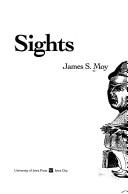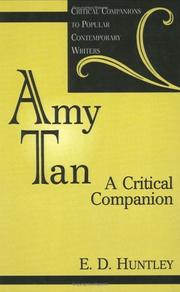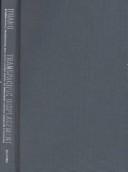| Listing 1 - 4 of 4 |
Sort by
|

ISBN: 1587291606 9781587291609 0877454272 0877454485 9780877454274 9780877454489 Year: 1993 Publisher: Iowa City University of Iowa
Abstract | Keywords | Export | Availability | Bookmark
 Loading...
Loading...Choose an application
- Reference Manager
- EndNote
- RefWorks (Direct export to RefWorks)
Since the beginning of the Western tradition in drama, dominant cultures have theatrically represented marginal or foreign racial groups as other-different form ""normal"" people, not completely human, uncivilized, quaint, exotic, comic. Playwrights and audiences alike have been fascinated with racial difference, and this fascination has depended upon a process of fetishization. By the time Asians appeared in the United States, the framework for their constructed Lotus Blossom and Charlie Chan stereotypes had preceded them. InMarginal Sights, James Moy dismantles these stereot

ISBN: 0313302073 0313007888 9780313007880 9780313302077 Year: 1998 Volume: *3 Publisher: Westport, Conn. London Greenwood Press
Abstract | Keywords | Export | Availability | Bookmark
 Loading...
Loading...Choose an application
- Reference Manager
- EndNote
- RefWorks (Direct export to RefWorks)
Chinees Amerikaanse vrouwen in de literatuur --- Chinese American women in literature --- Chinese Americans in literature --- Chinese Amerikanen in literatuur --- Femmes chino-americaines dans la littérature --- Sino-Américains dans la littérature --- Tan, Amy --- Criticism and interpretation --- Women and literature --- United States --- History --- 20th century --- Chinese American women in literature. --- Chinese Americans in literature. --- Tan, Eimi --- Tan, Enmei --- טאן, אמי --- 谭恩美 --- Criticism and interpretation.

ISBN: 0520928148 1282355988 9786612355981 1597349631 9780520928145 0585466017 9780585466019 9781597349635 6612355980 0520228863 9780520228863 0520232232 9780520232235 9781282355989 Year: 2002 Publisher: Berkeley University of California Press
Abstract | Keywords | Export | Availability | Bookmark
 Loading...
Loading...Choose an application
- Reference Manager
- EndNote
- RefWorks (Direct export to RefWorks)
Yunte Huang takes a most original "ethnographic" approach to more and less well-known American texts as he traces what he calls the transpacific displacement of cultural meanings through twentieth-century America's imaging of Asia. Informed by the politics of linguistic appropriation and disappropriation, Transpacific Displacement opens with a radically new reading of Imagism through the work of Ezra Pound and Amy Lowell. Huang relates Imagism to earlier linguistic ethnographies of Asia and to racist representations of Asians in American pop culture, such as the book and movie character Charlie Chan, then shows that Asian American writers subject both literary Orientalism and racial stereotyping to double ventriloquism and countermockery. Going on to offer a provocative critique of some textually and culturally homogenizing tendencies exemplified in Maxine Hong Kingston's work and its reception, Huang ends with a study of American translations of contemporary Chinese poetry, which he views as new ethnographies that maintain linguistic and cultural boundaries.
Intertextuality. --- Ethnology in literature. --- Immigrants in literature. --- Chinese Americans in literature. --- Chinese Americans in mass media. --- Chinese Americans --- American literature --- Chinese literature --- Criticism --- Semiotics --- Influence (Literary, artistic, etc.) --- Mass media --- Chinese --- Ethnology --- English literature --- Agrarians (Group of writers) --- Intellectual life. --- Chinese influences. --- Appreciation --- History and criticism. --- Chinese American authors --- Chinese Americans in literature --- Chinese Americans in mass media --- Ethnology in literature --- Immigrants in literature --- Intertextuality --- Chinese American authors&delete& --- History and criticism --- Chinese influences --- Intellectual life --- amy lowell. --- appropriation. --- asia. --- chinese poetry. --- critique. --- cultural history. --- cultural studies. --- disappropriation. --- displacement. --- ethnographer. --- ethnographic. --- ethnography. --- ezra pound. --- imagism. --- imagist poets. --- linguistic ethnography. --- linguistic theory. --- linguistics. --- race issues. --- race. --- racial stereotypes. --- racism. --- social history. --- social studies. --- stereotypes. --- transpacific.
Book
ISBN: 0804794758 9780804794756 9780804789646 0804789649 Year: 2015 Publisher: Stanford, California
Abstract | Keywords | Export | Availability | Bookmark
 Loading...
Loading...Choose an application
- Reference Manager
- EndNote
- RefWorks (Direct export to RefWorks)
Mark Twain (Samuel Langhorne Clemens, 1835–1910) has had an intriguing relationship with China that is not as widely known as it should be. Although he never visited the country, he played a significant role in speaking for the Chinese people both at home and abroad. After his death, his Chinese adventures did not come to an end, for his body of works continued to travel through China in translation throughout the twentieth century. Were Twain alive today, he would be elated to know that he is widely studied and admired there, and that Adventures of Huckleberry Finn alone has gone through no less than ninety different Chinese translations, traversing China, Taiwan, and Hong Kong. Looking at Twain in various Chinese contexts—his response to events involving the American Chinese community and to the Chinese across the Pacific, his posthumous journey through translation, and China's reception of the author and his work, Mark Twain in China points to the repercussions of Twain in a global theater. It highlights the cultural specificity of concepts such as "race," "nation," and "empire," and helps us rethink their alternative legacies in countries with dramatically different racial and cultural dynamics from the United States.
Chinese Americans in literature. --- Race relations in literature. --- Twain, Mark, --- Twain, Mark --- Tvėn, Mark --- Tuėĭn, Mark --- Tuwayn, Mārk --- Twayn, Mārk --- Tʻu-wen, Ma-kʻo --- Tven, M. --- Touen, Makū --- Twain, Marek --- Make Tuwen --- Tuwen, Make --- Make Teviin --- Твен, Марк --- Touain, Mark --- טבןַ, מרק, --- טוויין, מארק, --- טוויין, מרק, --- טווין, מארק, --- טווין, מרק, --- טווען, מארק, --- טוין, מרק, --- טװען, מארק, --- טװײן, מארק, --- 馬克吐温, --- Tuvāyn, Mārk --- Tvāyn, Mārk --- تواين، مارک --- Clemens, Samuel Langhorne --- Snodgrass, Quintus Curtius --- Conte, Louis de --- Knowledge --- Chinese Americans. --- Appreciation --- Influence.
| Listing 1 - 4 of 4 |
Sort by
|

 Search
Search Feedback
Feedback About UniCat
About UniCat  Help
Help News
News